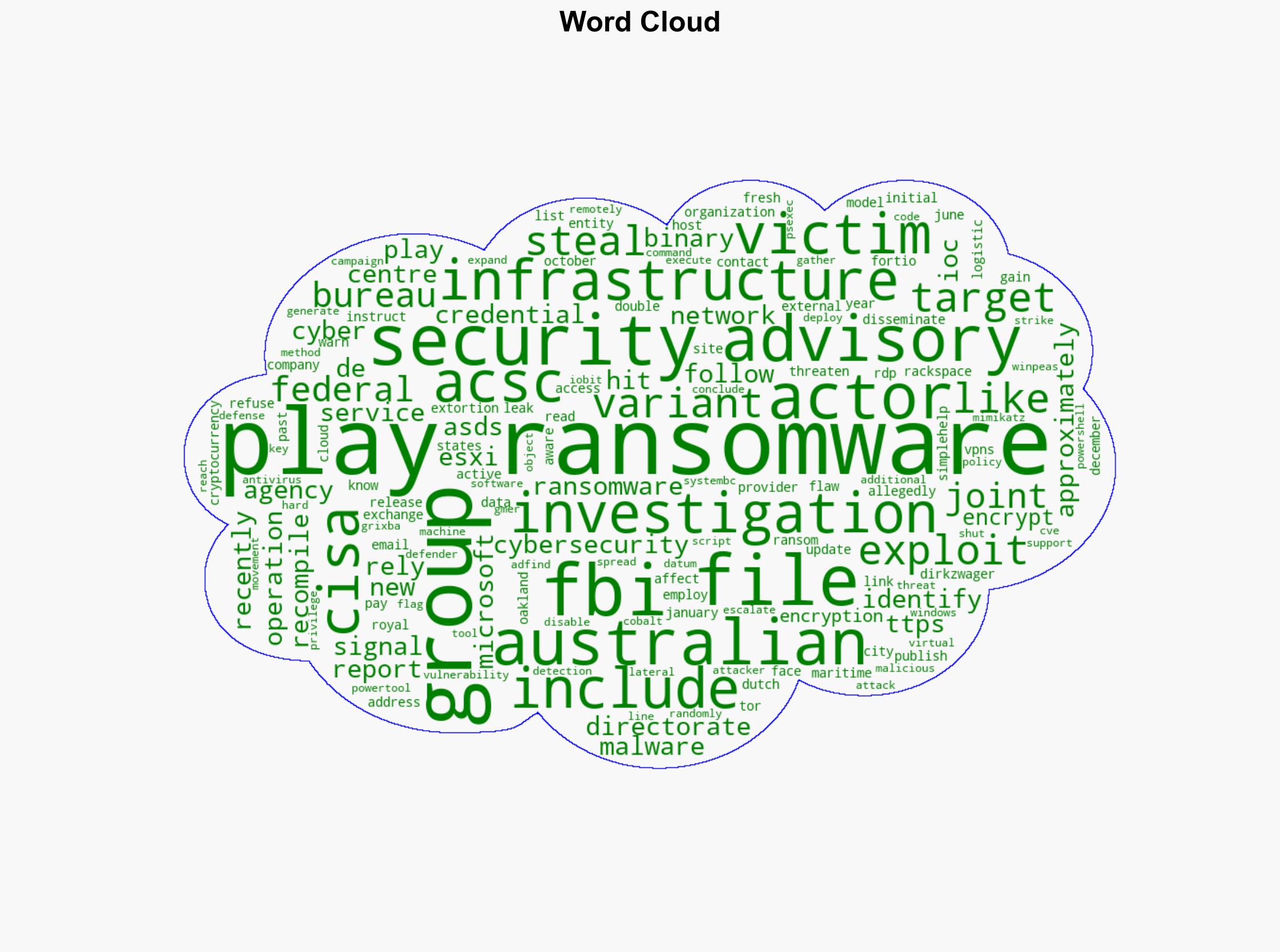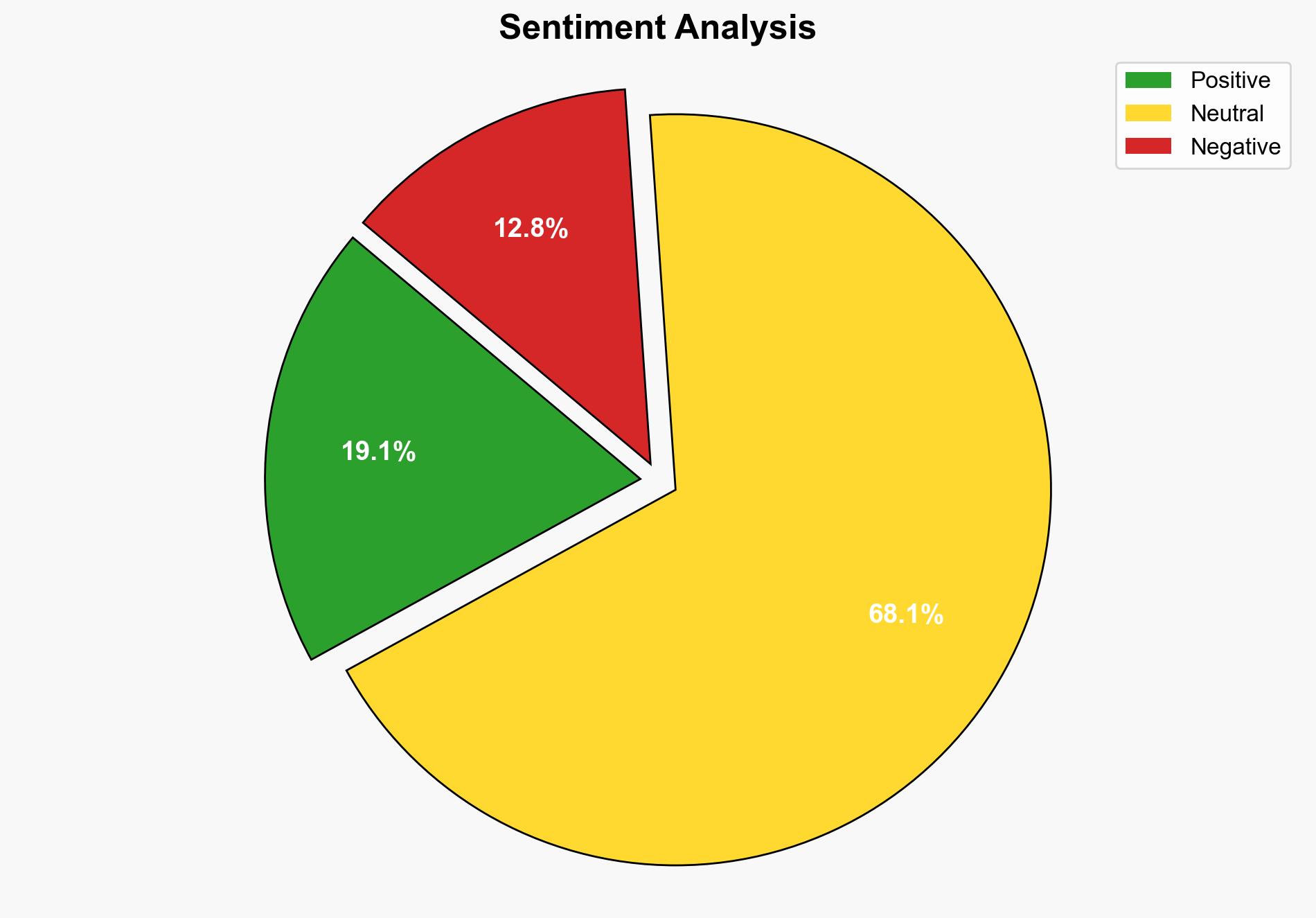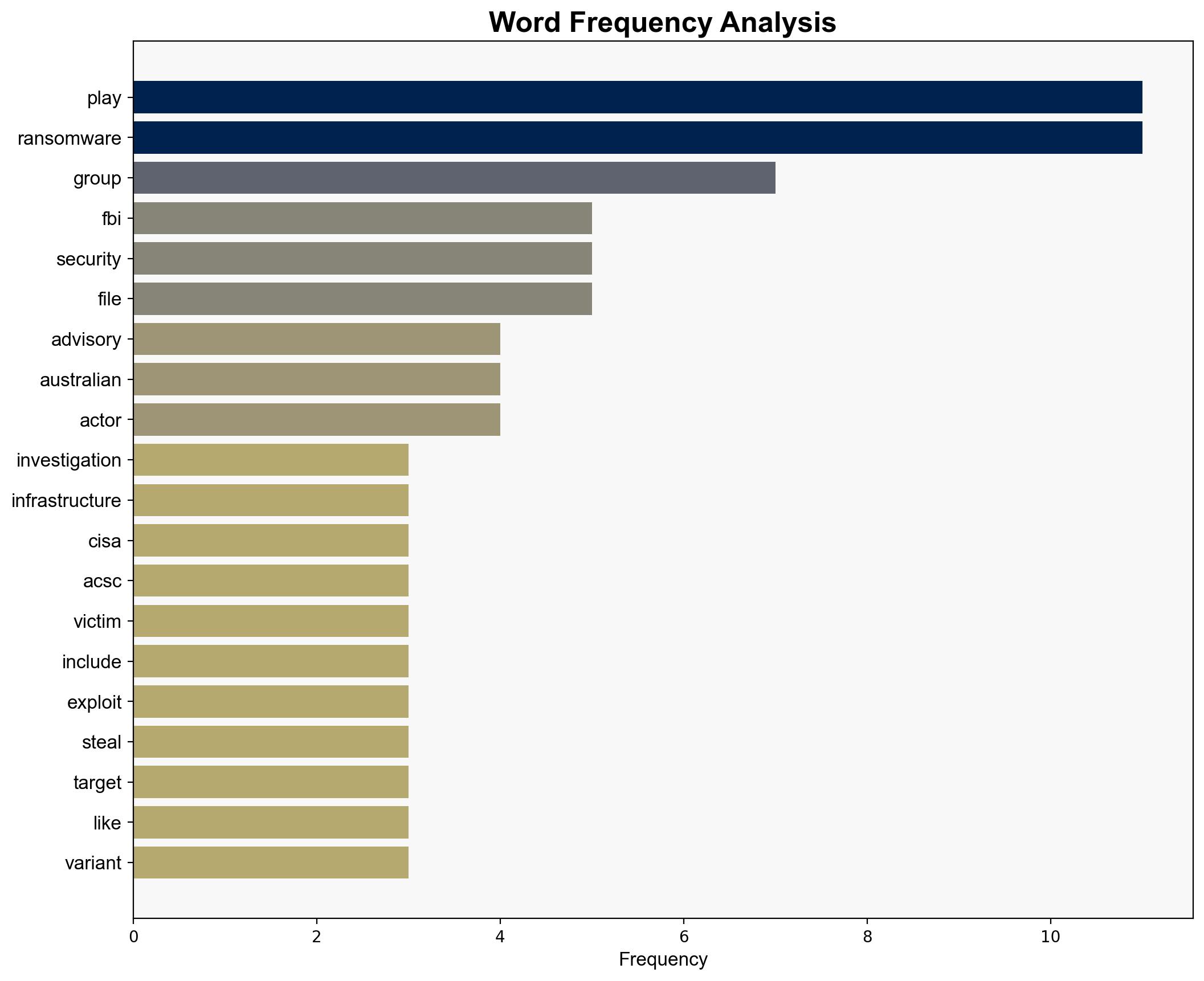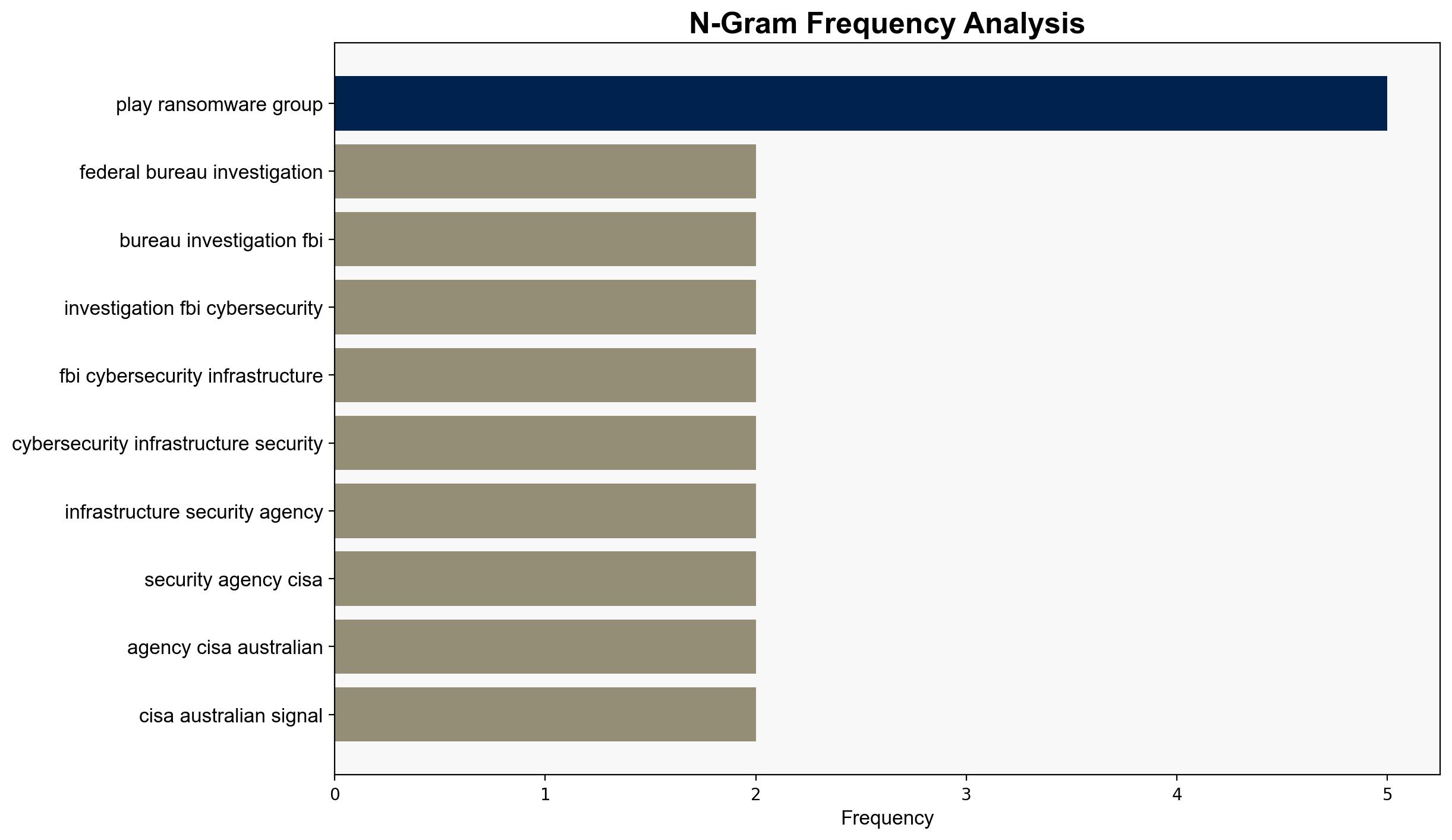Play ransomware group hit 900 organizations since 2022 – Securityaffairs.com
Published on: 2025-06-06
Intelligence Report: Play Ransomware Group Hits 900 Organizations Since 2022
1. BLUF (Bottom Line Up Front)
The Play ransomware group has targeted approximately 900 organizations since June 2022, employing sophisticated techniques and exploiting known vulnerabilities. Key recommendations include enhancing credential security, patching known vulnerabilities, and increasing monitoring of network anomalies to mitigate risks.
2. Detailed Analysis
The following structured analytic techniques have been applied to ensure methodological consistency:
Adversarial Threat Simulation
Simulations indicate the group uses a double extortion model, threatening data publication if ransoms are unpaid. They gain access through stolen credentials and known vulnerabilities in services like FortiOS and Microsoft Exchange.
Indicators Development
Key indicators include unusual network activity, unauthorized access attempts, and the presence of tools like Cobalt Strike and Mimikatz.
Bayesian Scenario Modeling
Probabilistic models suggest a high likelihood of continued attacks, with a focus on exploiting newly discovered vulnerabilities.
Network Influence Mapping
The group operates through a decentralized network, leveraging the Tor network for data leaks, complicating attribution and response efforts.
3. Implications and Strategic Risks
The Play ransomware group’s activities pose significant risks to critical infrastructure, particularly in sectors reliant on cloud services and maritime logistics. The potential for cascading effects on global supply chains and economic stability is high, necessitating cross-sector collaboration for effective mitigation.
4. Recommendations and Outlook
- Enhance security protocols for credential management and enforce multi-factor authentication across all access points.
- Regularly update and patch systems to close known vulnerabilities, particularly in widely used services like Microsoft Exchange.
- Implement robust network monitoring to detect and respond to anomalies promptly.
- Scenario-based projections suggest that without intervention, the group’s activities could expand, targeting more sectors and exploiting emerging vulnerabilities.
5. Key Individuals and Entities
The report does not specify individual names but highlights the involvement of the Federal Bureau of Investigation (FBI), Cybersecurity and Infrastructure Security Agency (CISA), Australian Signals Directorate (ASD), and Australian Cyber Security Centre (ACSC) in response efforts.
6. Thematic Tags
national security threats, cybersecurity, ransomware, critical infrastructure





